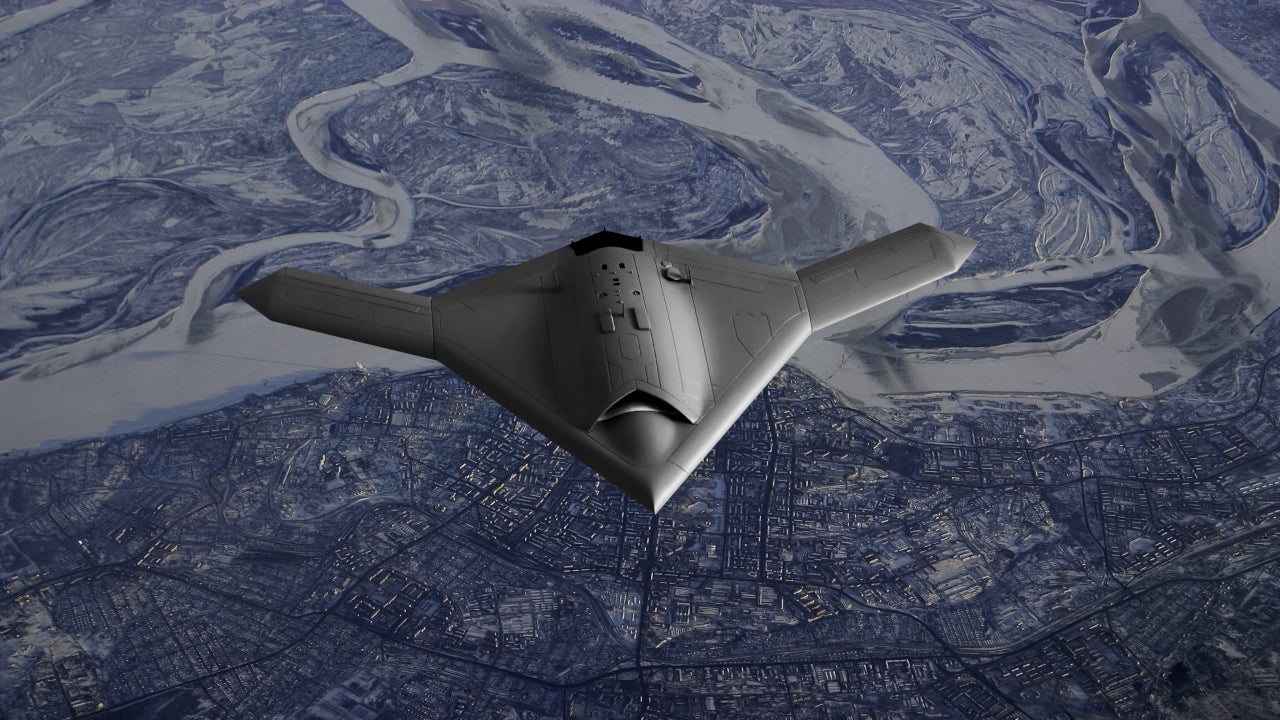C-UAS can employ several methods to detect the presence of hostile or unauthorised UAS. As new technologies such as artificial intelligence (AI) and drone swarms mature, unmanned aerial vehicles (UAVs) have the potential to revolutionise modern warfare. To counter this emerging threat, investment in cutting edge C-UAS is essential.
Technology Trends
Listed below are the key technology trends impacting the C-UAS theme, as identified by GlobalData.
GPS-denied operation
A key trend which will shape the C-UAS market going forward is the development of UAS, which can operate in Global Positioning System (GPS)-denied environment. Emerging technologies such as quantum radars will enable the development of positioning, navigation and timing (PNT) systems for use in GPS denied environments. This will render Global Navigation Satellite System (GNSS) jamming systems obsolete, posing a significant challenge to current C-UAS systems.
Swarm
Another major factor driving the investment in C-UAS technology is the anticipation amongst several defence ministries of having to face a UAV swarm attack. As UAVs improve in terms of size, weight and power (SwaP) parameters and also become cheaper to produce, with almost complete autonomous capabilities achievable in the near future, swarming, which is defined as multiple autonomous aircraft networked together, is anticipated to usher in a new era of UAV capabilities, bringing along with it the need to be able to neutralise such attacks by rival parties.
As this technology matures and applications disseminate into the global marketplace, the applications of such technology in asymmetrical battlefield or urban terror scenarios hold serious ramifications for security agencies facing imminent threats in the wake of both state and non-state sponsored aggression. Current military operation tactics could possibly be outmatched by terrorists or an opposing militia’s synchronised attack UAVs approaching from multiple directions at once. Such attacks can also be perpetrated on naval assets which might have limited assets to deal with a large swarm of attacking UAVs, in which case, even if a majority of the UAVs are neutralised, many would penetrate the defences and inflict severe damage.
Lasers
Lasers are a form of directed energy weapon (DEW) which destroy vital segments of the drone’s airframe, causing it fall to the ground. Lasers offer a low cost-per-shot option to operators, requiring on electrical energy rather than chemically propelled munitions. This characteristic renders them an attractive choice for C-UASs. Not only does it make the system highly transportable, as there is no need to transport associated ammunition to the operation area.
How well do you really know your competitors?
Access the most comprehensive Company Profiles on the market, powered by GlobalData. Save hours of research. Gain competitive edge.

Thank you!
Your download email will arrive shortly
Not ready to buy yet? Download a free sample
We are confident about the unique quality of our Company Profiles. However, we want you to make the most beneficial decision for your business, so we offer a free sample that you can download by submitting the below form
By GlobalDataThe ability to “fire” multiple shots in quick succession at low cost makes lasers a strong contender for future systems intended to tackle drone swarms. These swarms will be formed of many individual drones, and in order to cripple the operational effectiveness of the swarm as a whole, a large proportion of its component individuals will need to be eliminated.
High-power microwave
High-power microwave weapons are DEWs, which direct pulses of high intensity microwave energy at the drone, disabling the aircraft’s electronic systems. These weapons carry the same benefits as lasers, being highly transportable and low cost-per-shot. However, these weapons have the added advantage of not requiring aiming. Instead, they could potentially blanket a wide area with electromagnetic energy to disrupt or destroy electronics, thus neutralising an entire swarm in one go.
Current versions of high-powered microwaves, being tested or in prototyping, have limited range, with several projects underway to expand the same and pack in more power. These systems are anticipated to be effective for terminal defence against some types of swarm attacks or could be mounted forward on mobile platforms that intercept and incapacitate swarms further away from the area/personnel/assets being defended.
Long Term Evolution (LTE) network control
A number of commercially available UAVs are now being developed to enable control through mobile LTE networks rather than through an radio frequency (RF) link. UAVs operated through an LTE network essentially enable an indefinite range for the user and thus in turn make the operator much harder to find or maybe not detectable at all depending on the range of the C-UAS system.
Onboard AI
The incorporation of AI onboard UAS platforms poses a number of challenges for C-UAS. In addition to enabling drone swarm technology, onboard AI in the near future may empower UAS to autonomously avoid incoming projectiles, limiting the effectiveness of kinetic kill C-UAS systems.
Preventing collateral damage in civilian contexts
Conventional weapons, such as guided missiles and rockets can stop threats at long distances and create large areas of effect. These weapons can cause unwanted collateral damage to people and objects close to a target, especially when the targeting process is not high precision. With the increasing use of C-UAS in civilian and law enforcement roles, it is imperative that systems are developed which minimise collateral damage.
This trend will drive the development of low-collateral damage systems, such as those using nets, electronic warfare (EW), and cyber based interdiction techniques. Hard-kill systems such as DEW and conventional projectile based systems will continue to see demand in defence roles increase. Additionally, it is likely that increased regulation will be instituted to manage the use of C-UAS in civilian roles.
This is an edited extract from the Counter-Unmanned Aerial System (C-UAS) in Aerospace and Defense – Thematic Research report produced by GlobalData Thematic Research.









